Cycling in the Rain
Rain - lets face it, in the UK especially, you are probably going to end up cycling in the rain at some point. Nobody really 'wants' to ride in the rain given the choice, but it doesn't have to stop you from getting out on your bike altogether. Here are 7 little tips we try to use to ensure we have a good safe ride in the rain and wet conditions.
Check your bike before you go -
It sounds like the most common sense thing in the world, but spending 5 or 10 minutes checking you bike over before you set off becomes even more important if you are heading out in wet conditions. You can check out our Pre-ride Bike Checks article for the things we recommend.
Decrease inflation -
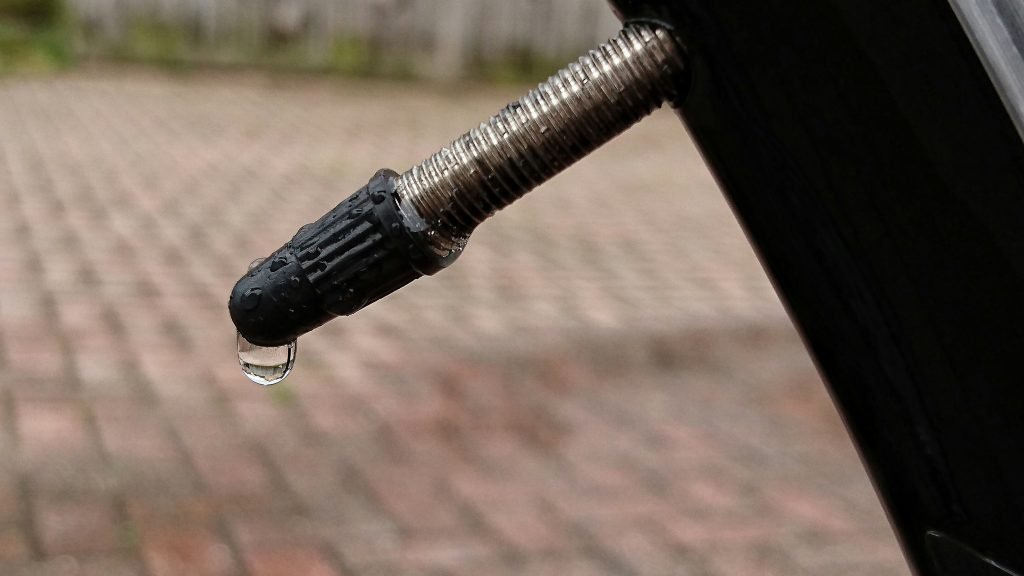 Some people may use specific winter bike with wet-weather tyres and mudguards for riding in the rain. But for those that don't have a garage full of bikes or tyres for different weather conditions, you can improve your ride but slightly reducing the pressure in your tyres. Lower pressure means in your tyres will give you a greater contact patch to the road surface. This doesn't mean riding with flat tyres, but reducing your normal riding pressure by around 10-15 psi should combat the reduction in grip. Whilst a lot of 'racing' tyres have a slick casing, they still provide a decent level of grip in the wet thanks to the compound used in the rubber. The Continental GP4000s & Schwalbe's One are both good examples of this.
Some people may use specific winter bike with wet-weather tyres and mudguards for riding in the rain. But for those that don't have a garage full of bikes or tyres for different weather conditions, you can improve your ride but slightly reducing the pressure in your tyres. Lower pressure means in your tyres will give you a greater contact patch to the road surface. This doesn't mean riding with flat tyres, but reducing your normal riding pressure by around 10-15 psi should combat the reduction in grip. Whilst a lot of 'racing' tyres have a slick casing, they still provide a decent level of grip in the wet thanks to the compound used in the rubber. The Continental GP4000s & Schwalbe's One are both good examples of this.
Light up -
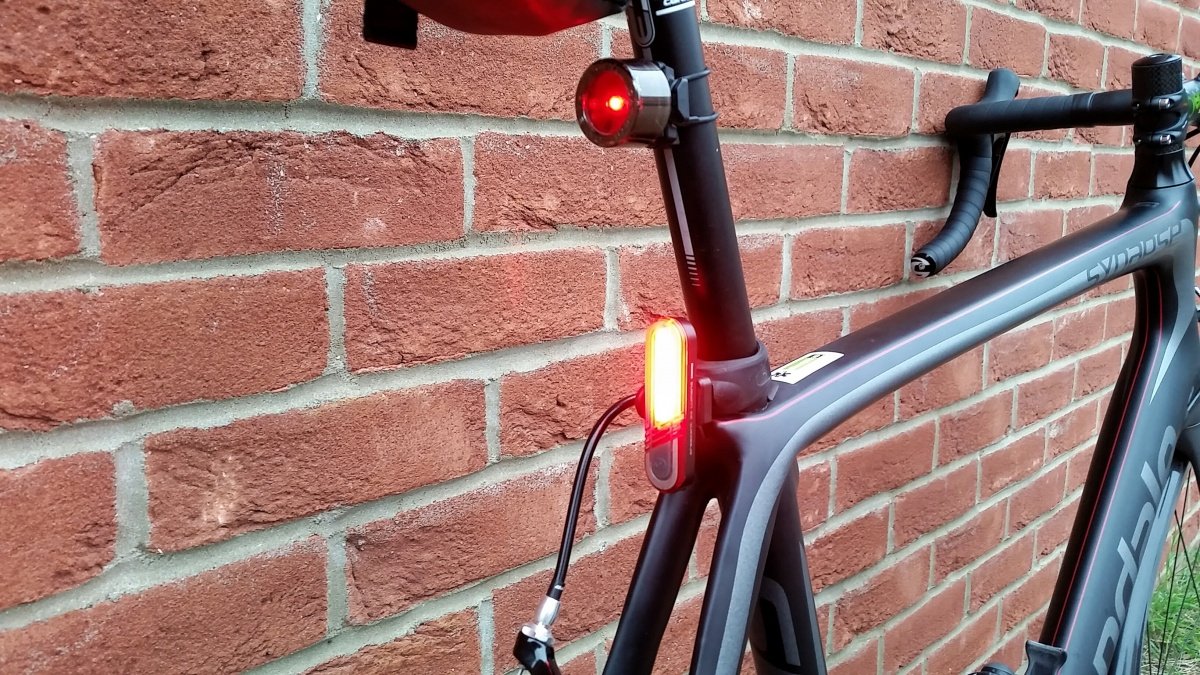 If I am honest, I don't ride my bike without a rear safety light. The simple fact is it is small, bright and makes not difference to my ride. What it does do is let other road users see you earlier. This becomes even more important when it is raining. Drivers visibility is greatly reduced in the rain and should you be unfortunate enough to be caught out in a sudden downpour - you need to make sure you are seen as early as possible. Some safety lights are better an others but unlike some full-sized rear lights, you don't have to spend a fortune.
If I am honest, I don't ride my bike without a rear safety light. The simple fact is it is small, bright and makes not difference to my ride. What it does do is let other road users see you earlier. This becomes even more important when it is raining. Drivers visibility is greatly reduced in the rain and should you be unfortunate enough to be caught out in a sudden downpour - you need to make sure you are seen as early as possible. Some safety lights are better an others but unlike some full-sized rear lights, you don't have to spend a fortune.
Get your kit on -
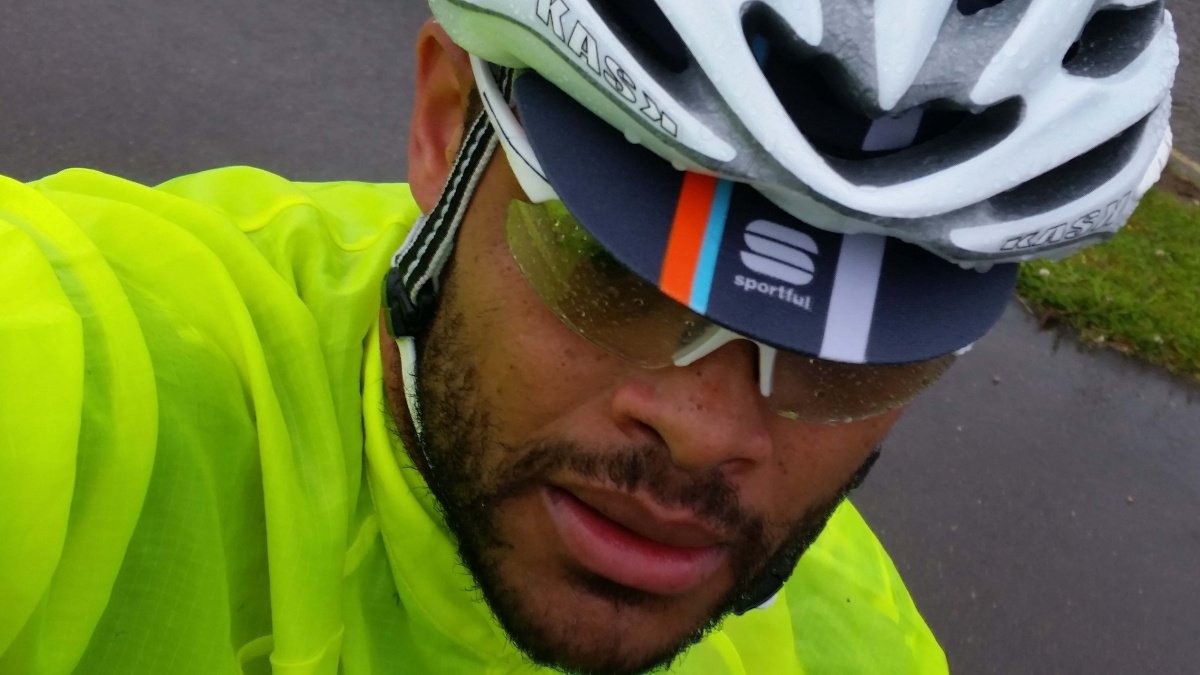 To be honest with how small some water/showerproof jackets pack down to these days, there isn't much reason not to carry one. The chances are if it rains mid-ride or is raining when you set off, you are probably going to get wet one way or another. There are waterproof jackets that are designed to keep you completely dry from the rain but they are not always the most breathable. As you stay dry, your body temperature increases inside of your jacket, causing you to sweat more. We would recommend thinking about a jacket that sits somewhere in between a full waterproof and no jacket at all. There are some great showerproof jackets available that are designed to be water resistance (not waterproof), windproof to keep the chill out whilst being breathable. As you already know, we're big fans of the retro-style cycling caps and are always kitted out with one for riding in the rain. They do a good job of keeping the rain out of your eyes and your head warm on colder days.
To be honest with how small some water/showerproof jackets pack down to these days, there isn't much reason not to carry one. The chances are if it rains mid-ride or is raining when you set off, you are probably going to get wet one way or another. There are waterproof jackets that are designed to keep you completely dry from the rain but they are not always the most breathable. As you stay dry, your body temperature increases inside of your jacket, causing you to sweat more. We would recommend thinking about a jacket that sits somewhere in between a full waterproof and no jacket at all. There are some great showerproof jackets available that are designed to be water resistance (not waterproof), windproof to keep the chill out whilst being breathable. As you already know, we're big fans of the retro-style cycling caps and are always kitted out with one for riding in the rain. They do a good job of keeping the rain out of your eyes and your head warm on colder days.
Avoid the gutter, puddles and rainbow patches -
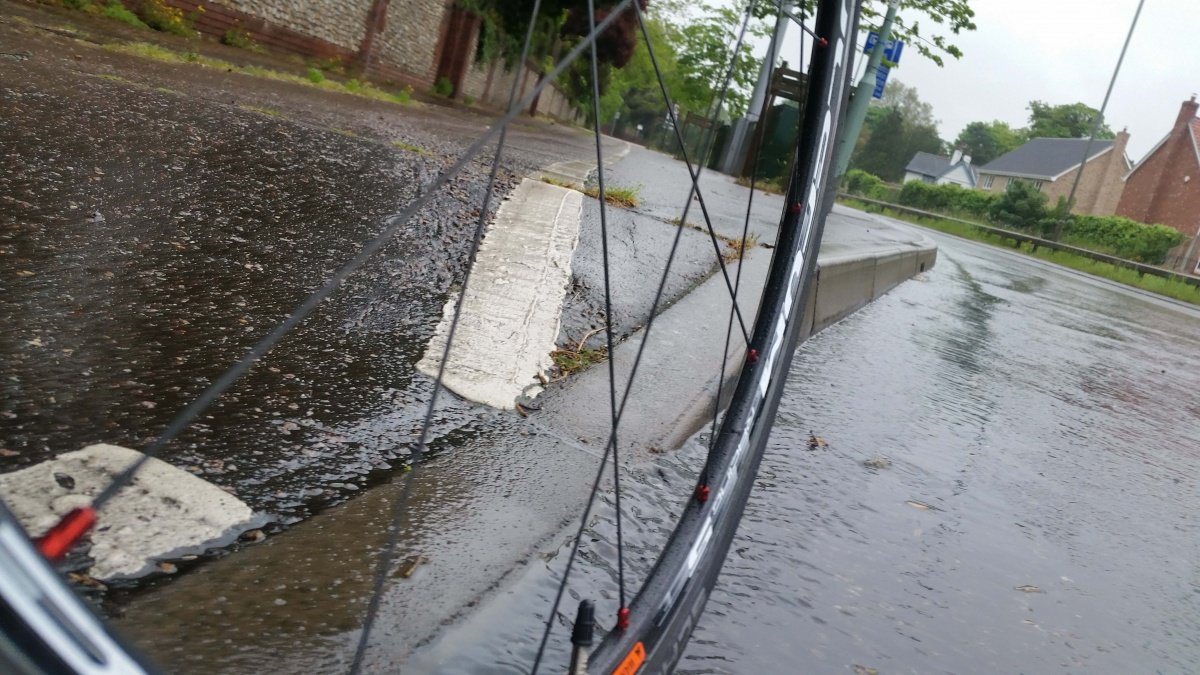 When it rains, any loose road debris like stones, sticks and leaves are washed to the gutters at the side of the road - where cyclists ride. They then become covered with puddles and standing water. This is also the case with potholes. When cycling in the rain or wet conditions, where possible avoid puddles and standing water as what lies beneath could cause you to puncture, lose your grip or worse in the case of a hidden pothole. Cycling in the rain means that your awareness of what is around you as well as in front of you has to be increased. Look at the road surface ahead of you for 'rainbow patches'. These are caused but oil and diesel from motor vehicles and when mixed with rain water, becomes even more slippery and a cyclists worst enemy.
When it rains, any loose road debris like stones, sticks and leaves are washed to the gutters at the side of the road - where cyclists ride. They then become covered with puddles and standing water. This is also the case with potholes. When cycling in the rain or wet conditions, where possible avoid puddles and standing water as what lies beneath could cause you to puncture, lose your grip or worse in the case of a hidden pothole. Cycling in the rain means that your awareness of what is around you as well as in front of you has to be increased. Look at the road surface ahead of you for 'rainbow patches'. These are caused but oil and diesel from motor vehicles and when mixed with rain water, becomes even more slippery and a cyclists worst enemy.
Brake before you need to stop -
If your wheels and brakes are wet, it will take longer for you to stop - fact! This is less likely to be the case with disc brakes however as disc brakes provide more modulation. This is the amount that you can pull your brake levers with the brakes just coming on to locking up completely. Rim brakes will gather water on the brake pads and the braking surface of the wheel - this means that little will happen immediately when applying the brakes unless you pull the lever hard. The last thing you want to do is go flying across a busy cross-road because you've braked too late in the rain. Start applying the brakes a few meters before you normally would but remember not to apply too much pressure as your brakes might suddenly grab and cause you to skid.
Steady does it and don't panic -
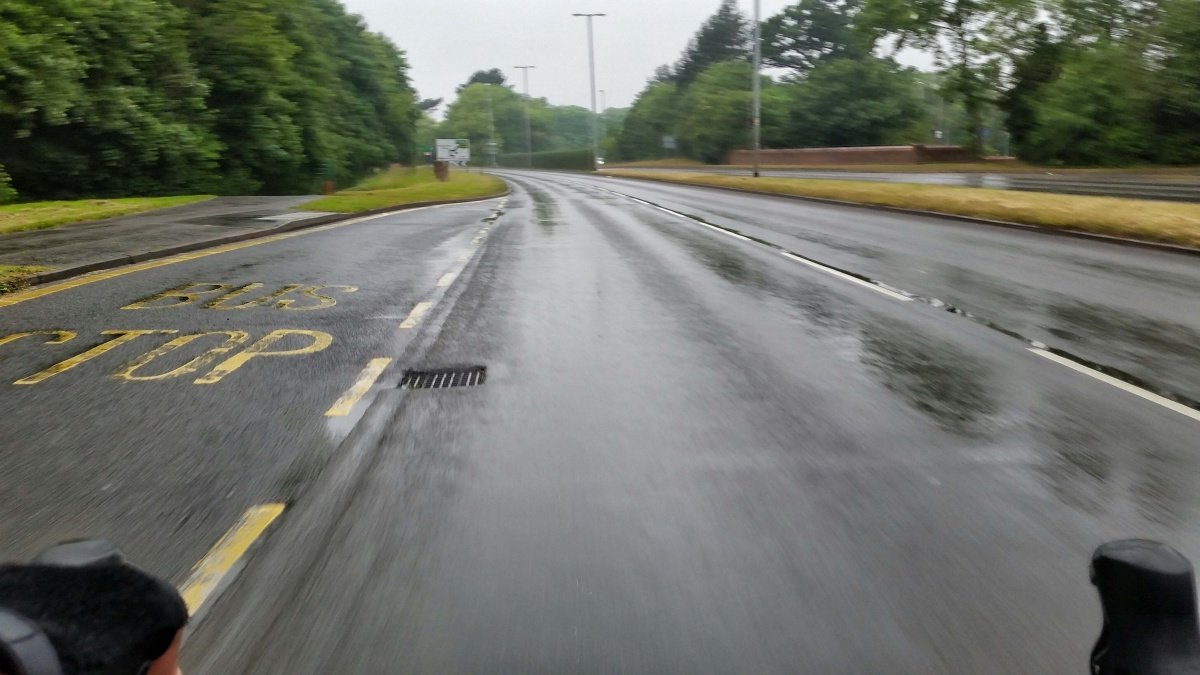 Unless you are racing, there are no prizes for riding flat-out in a downpour. Keep your pace steady and manageable. The worst thing you can do when cycling in the rain is panic. If your pace is high or you are trying to keep up with a group but feel out of your comfort zone, slow it down a little. Take corners easier. You may have wet-weather tyres that are grippy on a straight stretch of road but they will still have reduced traction on a wet corner.
Unless you are racing, there are no prizes for riding flat-out in a downpour. Keep your pace steady and manageable. The worst thing you can do when cycling in the rain is panic. If your pace is high or you are trying to keep up with a group but feel out of your comfort zone, slow it down a little. Take corners easier. You may have wet-weather tyres that are grippy on a straight stretch of road but they will still have reduced traction on a wet corner.
As always we recommend - you should use your best judgement before heading out in any conditions. Always exercise caution if you are cycling in adverse weather conditions. Most of all always - ride safe!AATR

